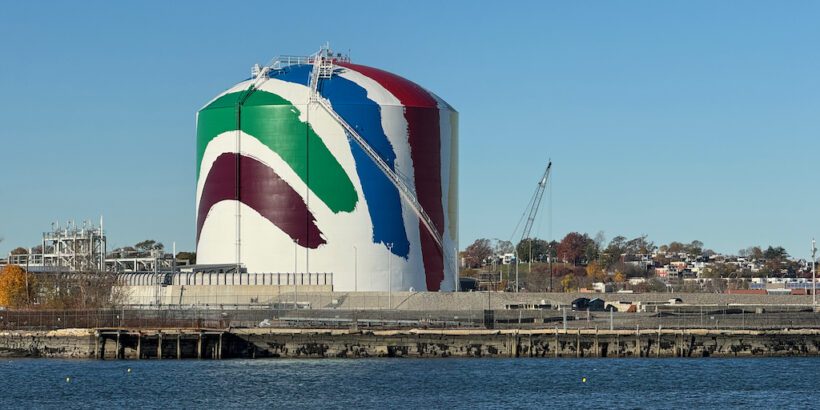When you find yourself in Boston, there’s no shortage of things to dive into.
Whether it’s tracing the historic Freedom Trail, meandering down the charming Acorn Street, savoring delectable cannolis, or cheering on a game at Fenway Park, the city offers a plethora of experiences.
Yet, amidst these well-known attractions, one gem that might not initially grab your attention is the renowned Rainbow Swash, a local favorite.
In this piece, I’ll dissect the ins and outs of this vibrant work of art, providing you with everything you need to know and tips on how to fully immerse yourself in its allure.
Table of Contents
What is Rainbow Swash?
The Rainbow Swash is an art work found on a 140-foot (43 m) high gas tank in Boston, MA. Thought to be the largest copyrighted piece of art at the time of its inception, it consists of a vibrant rainbow design, featuring large parallel brush strokes. It’s become a popular landmark in Boston, despite its fair share of controversy over the years.
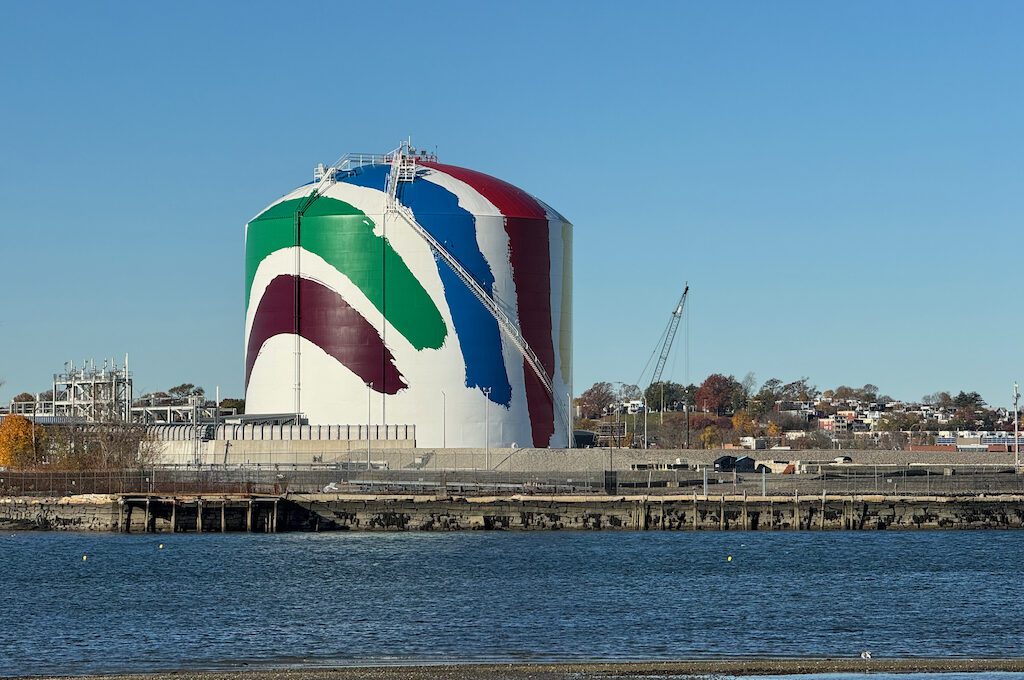
Where is Rainbow Swash?
Rainbow Swash is in the Dorchester neighborhood of Boston.
Locating the Rainbow Swash on Google Maps is a breeze—just punch in “Rainbow Swash,” and you’ll be on your way. However, exercising caution in proximity to the facility is advisable.
A cautionary tale involves a photographer reported for suspicious behavior, triggering a cascade that involved security guards, federal agents, and legal entanglements post-9/11. He ended up suing on the grounds that the suspicious activity reporting was unconstitutional but last I checked the courts ruled against him in 2019.
While the incident transpired in 2004, it underscores the sensitivity of such areas, especially when wielding around large cameras and lenses.
In the spirit of prudence, snapping photos near the security gates is discouraged.
Instead, relish the spectacle from a safe distance.
Optimal vantage points include Squantum Point Park, a charming peninsula just east of the tank. Drive there, embark on a brief stroll from the parking lot, and treat yourself to picturesque views of the Squantum Channel, Downtown Boston, and the JFK Library.
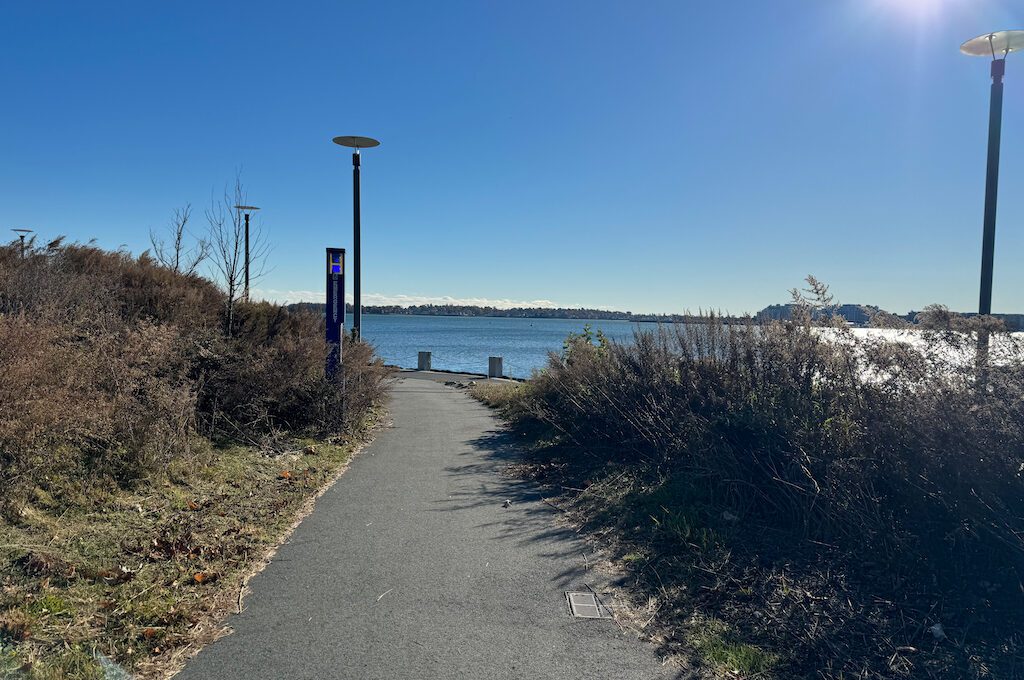
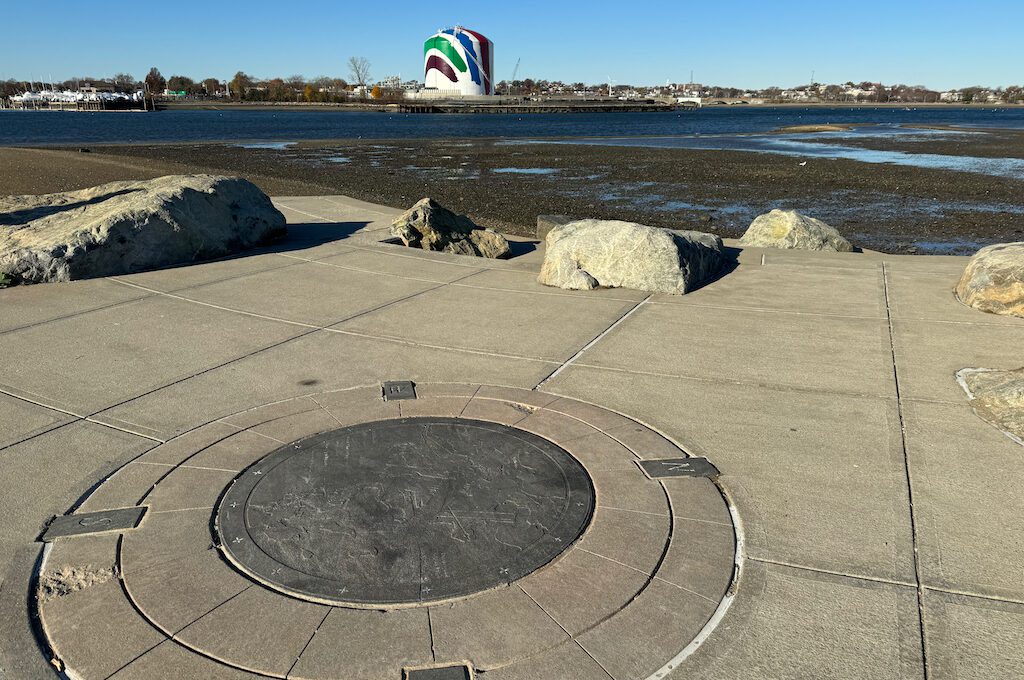
Squabbles with security are highly unlikely in this serene locale, making it an ideal spot to soak in the Rainbow Swash. For a more casual encounter, catch glimpses while cruising along Interstate 93 or the adjacent harbor roads south of Boston. Additionally, a visit to the JFK Presidential Library and Museum offers a decent perspective on this iconic artwork.
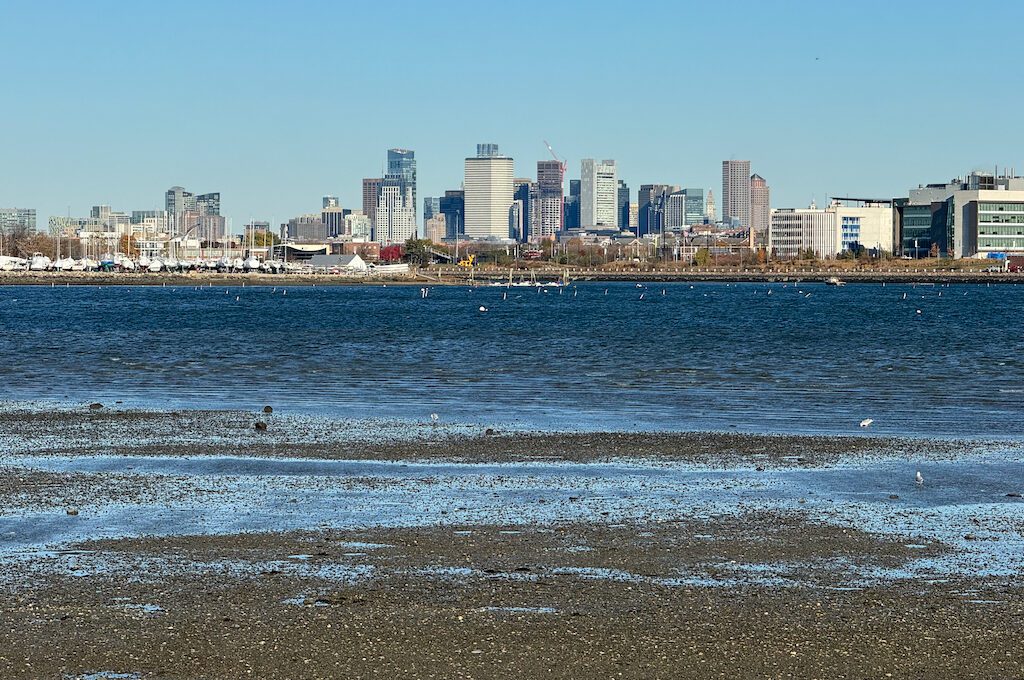
The story of Rainbow Swash
The Rainbow Swash made its debut in 1971, capturing attention as not just art but a colossal copyrighted masterpiece of its time. In fact, it was considered the world’s largest piece of copyrighted artwork at the time.
The creative force behind this iconic piece was Corrita Kent, an Andy Warhol-inspired religious sister recognized for her artistic expressions intertwining Christianity and social justice. Kent’s advocacy as a peace activist echoed through her art, promoting messages of harmony.
She also created “propaganda posters for political causes and the anti-war movement.”
Unveiled against the backdrop of the Vietnam War, the Rainbow Swash naturally became a canvas for interpretation. Its blue stripe, in particular, sparked controversy in the ’70s. Some speculated that it held the profile of Vietnamese leader Ho Chi Minh. Kent, however, never verified this, with reports suggesting she dismissed it with a laugh.
Regardless, the artwork stirred the pot and prompted other varied interpretations. From seeing the likenesses of Fred Flintstone to Osama bin Laden, the Rainbow Swash became a canvas where diverse perceptions collided.
The Rainbow Swash underwent a transformation in 1992 when the original tank, adorned with the rainbow, was dismantled. In its place, a recreation emerged on an adjacent tank.
Interestingly, this change wasn’t without its share of dissent.
Veteran groups voiced objections, still perceiving the artwork as a form of war protest in support of North Vietnam. Despite their protests, the artistic revival prevailed, and the Rainbow Swash found a new home on the tower in 1992.
It’s worth noting that the reincarnated version featured a less pronounced blue stripe, possibly contributing to a milder reception and a reduction in its controversial aura.
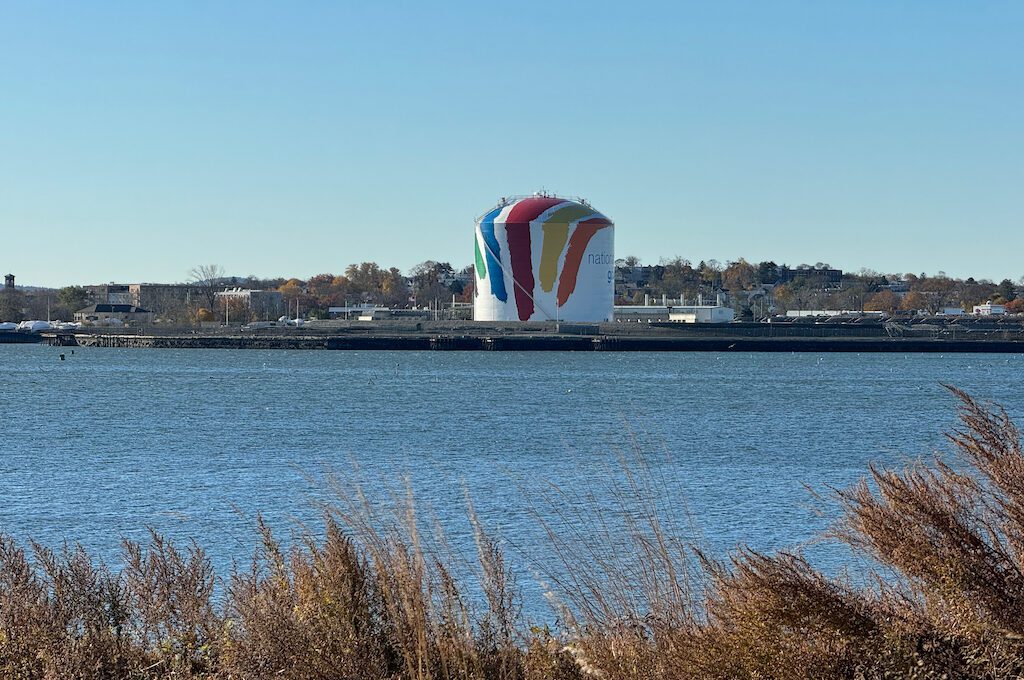
So, does that blue stripe really hint at Ho Chi Minh?
Like I just mentioned, they supposedly tweaked the blue stripe over time, so checking it out now won’t reveal the same thing folks spotted back in the day.
Still, I’ve looked at some pics of the blue stripe next to Ho Chi Minh’s profile. Gotta admit, I get where they’re coming from. You can kinda make out a forehead, eyelashes, a nose, the mouth, and that iconic beard. I don’t think Ho Chi Minh ever had a beard that long but this could always be an “artistic interpretation.”
It’s pretty subtle and ambiguous, so nailing down a solid conclusion on that is of course going to be a bit tricky. But given the social justice propaganda the artist was known for, I’m not sure how surprising it would be to find out that this actually was some sort of Ho Chi Minh symbolism.
Anyway, it’s a pretty cool mystery to explore. Once you start hunting for that pattern, it’s one of those things that’s hard to unsee.
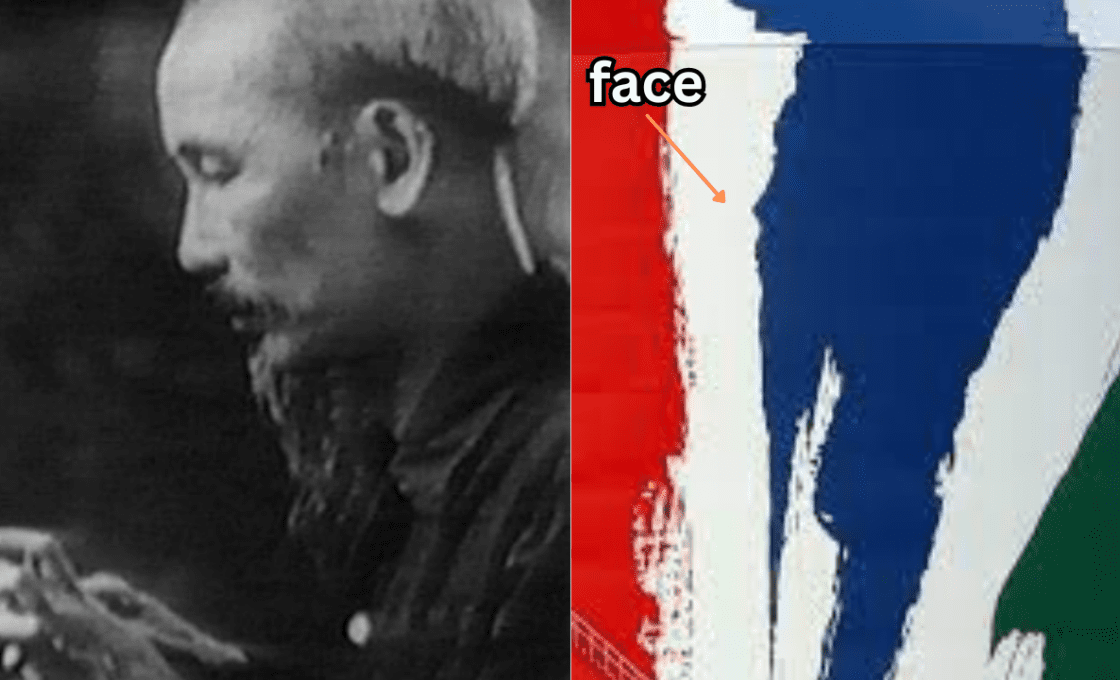
What adds a quirky charm to the Rainbow Swash is how it’s woven its way into the local culture.
A quick online search reveals a trove of inventive recreations. From cakes to coffee mugs and even Christmas ornaments, the Rainbow Swash design has found its way into various corners of creative expression.
One personal favorite? A white-painted propane tank repurposed for someone’s grill. It’s a clever nod that really underscores just how deeply ingrained the Rainbow Swash has become in the local fabric.
Final word
All in all, I find this to be a rather intriguing landmark.
Having no roots in the Boston area, I had never stumbled upon this gem before. Still, it manages to catch your eye along the freeway, especially once you’re clued into its unique design.
It’s funny how we all seem to have this knack for spotting patterns in ambiguous shapes. I reckon that’s what drew a lot of folks to it but it’s hard to rule out the possibility of an intentional embedment of Ho Chi Minh given: 1) the patterns we see 2) the background of the artist and 3) the era of the production.
Daniel Gillaspia is the Founder of UponArriving.com and the credit card app, WalletFlo. He is a former attorney turned travel expert covering destinations along with TSA, airline, and hotel policies. Since 2014, his content has been featured in publications such as National Geographic, Smithsonian Magazine, and CNBC. Read my bio.

